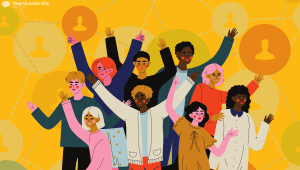Thank you for searching the NeuroLeadership Institute archives. Here’s what we were able to find for you.
Still having difficulty finding what you’re looking for? Contact us.

What leaders should consider when sensitive social issues arise.

In this infographic, we dive into how the brain reacts to unfairness and why systems must be overhauled to achieve true equity.

Employers can play a pivotal role in supporting gender diversity and ensuring everyone feels valued and included. Here are some steps to consider.

Our best advice from 2022 about how leaders can mobilize toward achieving diversity, equity, and inclusion goals.

Janet M. Stovall and Michaela Simpson discuss how genuine allies can examine their intentions and use their privilege to advocate for change.

A discussion on why it’s so hard to get authentic allyship right.

A look at the differences between performative allyship and authentic allyship.

Whether you’re a seasoned DEI practitioner or looking to dive into organizational DEI efforts, NLI’s guide will get you up to speed.

If you think you need to focus #change or #DEI efforts on the people who disagree, you’re missing out on the power of the middle.

As we celebrate Pride month and Juneteenth and look to other national awareness months and holidays, set your sights on goals that show your company’s authentic activism.

Some anniversaries are harder than others. Here are three tools managers can use to put focus where it matters.

So many of us are trying to be better allies in the workplace. But research shows a discrepancy between the intent of allies and the impact of their actions. Here’s how to be a better ally.

One soft skill has a place on the battlefield, the boardroom, the breakroom, and the Zoom room. Immerse yourself in stories that illustrate the benefits of compassion in any setting.

Diversity training can feel performative, and elicit groans from those asked to attend. But it absolutely can be impactful, and that’s through a mix of both delivery and measurement.

A look at the differences between performative allyship and authentic allyship.

The workplace is shaped by how people interact with other people. That’s where allies come in.

Before you can launch any initiative, you’ll need your leaders’ buy-in. So we’ve compiled a list of our most foundational pieces on allyship to help you make the case to your organization.

Organizations are using allyship to promote an inclusive culture. We want to learn more about ways in which organizations make it a reality.

Many business leaders aren’t quite sure how to define, develop, or deploy the “E” in DE&I. Here’s what the science says.

Up to 98% of people have the potential to become allies. To reach that potential, we need to understand what makes a person an ally.

How does one become an ally? Ultimately, it’s a set of habits that we practice daily. Here’s how you can create and cultivate those habits.

Colleges play an important role in bringing diverse groups together. As such, they should make it a priority to create a sense of allyship on campus.

Understanding the nuances between allyship and inclusion is important to helping your team act in everyone’s best interest, and correct past imbalances.

The data say leaders need to get more intentional about cultivating diverse talent. The science of allyship and inclusion can show us how.

As interest in allyship swells, so does the risk for misinterpretation. We’ve combed through the research and presented these myths about allyship.

I have the fortune of knowing and working with incredible people of all backgrounds and ethnicities. And as a black leader who has held senior-level positions, I am frequently being asked about this moment in history. Given what I’m being asked by my non-black friends and peers, and what I’m being told by my black friends and peers, it seems as if we could benefit from making a few things known.
Join millions of employees in creating culture change at scale by reaching out today.

In 2007, David and Lisa Rock and their team had been working in leadership development and executive coaching for ten years, when David coined the term “NeuroLeadership.”ef

North America
Africa
South America
Asia
Europe
Australia
© NeuroLeadership Institute 2025. All Rights Reserved
This site uses cookies to provide you with a personalized browsing experience. By using this site you agree to our use of cookies as explained in our Privacy Policy. Please read our Privacy Policy for more information.